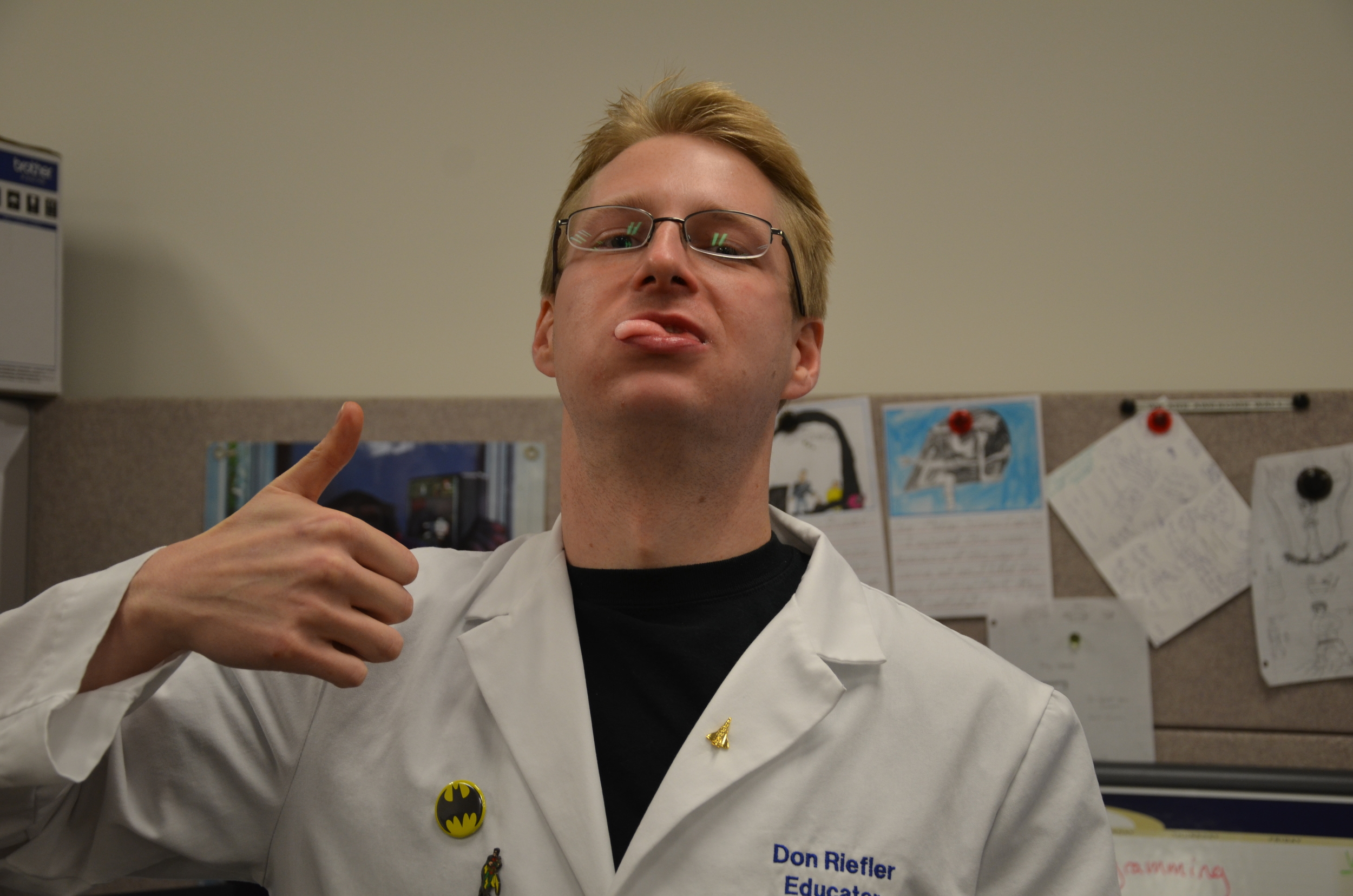At Home Experiment 1: Sherbet
Normally Don and I qualify all of our activities with "don't try this at home". So sometimes we like to share ideas for experiments that you CAN try at home. Prompted by the tempting display of Halloween candy at the local store we bring you a simple, fun, and family-friendly experiment that had Don literally foaming at the mouth.
Sometimes it seems that all acid/base experiments are as old as the hills and elicit about as much excitement as a box of rocks (taking for granted you aren't a geologist). You mix together vinegar and baking soda and spend the next hour cleaning up. We would like to reinvigorate the acid/base reaction with an easy experiment that’s fun to do and, more importantly, fun to eat.
The science: Atoms that lose or gain electrons are known as ions and have either a positive (lost electron) or negative (extra electrons) charge . Whether a substance is an acid or a base depends upon what type of ion is released when that substance is put into water. The release of a hydrogen ion is the sign of an acid. The pH scale measures the amount of hydrogen (acid)or hydroxide (base) ions in a given substance. Ranging from 0-14, the lower numbers denote an acid while the higher numbers belong to base. Drinking water is, ideally, around a 7 or neutral.
Still with us? Good.
When acids and basesare mixed, many things can happen. The creation of carbon dioxide gas is one of the most recognizable signs, as with vinegar (acid) and baking soda (base). We want to create that reaction in a new way and in a new place; namely your mouth. To do this we will create a delicacy known traditionally as Sherbet.
You will need:
- ½ tsp. citric aid crystals (check your local supplement store)
- 1 tsp. powdered sugar
- ½ to 1 tsp. flavored drink crystals (I used sweetened Kool-Aid)
- ¼ tsp. baking soda
Mix all ingredients in a small bowl or bag, making sure to break up any clumps of baking soda. When mixed, dip your finger in the powder and taste. Done right, you should have a sweet, tart, fizzy mouthful of science!
What’s happening: The combination of citric acid and baking soda creates carbon dioxide gas, making fizzy bubbles in your mouth. Why don’t the two substances react immediately when mixed? This reaction requires the moisture from your saliva to act as a catalyst to start the reaction. The powdered sugar and drink mix serve to sweeten the concoction.
Try this too: Leave out the sweeteners. How does that change the reaction and flavor?
*Sherbet idea from: http://www.sciencekids.co.nz/


